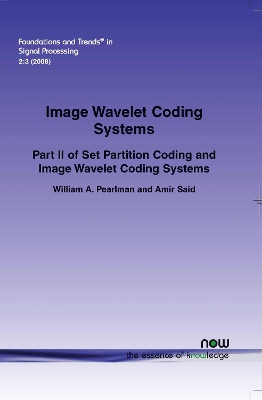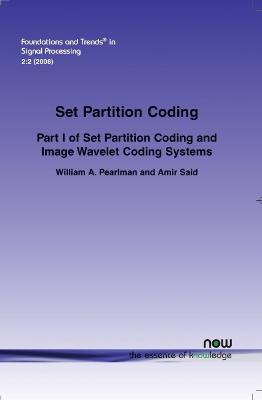Foundations and Trends (R) in Signal Processing
2 total works
Set partition coding is a simple, popular, and effective method that has produced some of the best results in image and signal coding. Nevertheless, the literature has not adequately explained the principles of this method that make it so effective. This article, in tandem with Part I, which is available separately, remedies this situation and describe various image wavelet coding systems, most of which use set partition coding in some form. In Part II, various image wavelet coding systems are described from input to output. Featured are systems that incoporate set partition coding as primary or secondary methods of compression.
A particular emphasis is the means to realize desirable compressed bitstream properties, such as progressive fidelity and progressive resolution encoding and decoding and direct selection of regions of interest for decoding. Also described are methods to allocate a given number of code bits to wavelet coefficients so as to achieve the least distortion. The particular systems described in this part include SBHP (Subband Block Hierarchical Partitioning), EZBC (Embedded Zero Block Coding), JPEG2000, and a version of SPIHT that enables simultaneously the bitstream properties mentioned above.
Parts I and II together build to a tutorial that is written on a level suitable for students and practitioners of image and signal compression. A unique aspect is the setting apart in boxes of the detailed steps of the algorithms in addition to explanation of these steps and their underlying principles. Many figures and examples are sprinkled throughout to aid understanding.
A particular emphasis is the means to realize desirable compressed bitstream properties, such as progressive fidelity and progressive resolution encoding and decoding and direct selection of regions of interest for decoding. Also described are methods to allocate a given number of code bits to wavelet coefficients so as to achieve the least distortion. The particular systems described in this part include SBHP (Subband Block Hierarchical Partitioning), EZBC (Embedded Zero Block Coding), JPEG2000, and a version of SPIHT that enables simultaneously the bitstream properties mentioned above.
Parts I and II together build to a tutorial that is written on a level suitable for students and practitioners of image and signal compression. A unique aspect is the setting apart in boxes of the detailed steps of the algorithms in addition to explanation of these steps and their underlying principles. Many figures and examples are sprinkled throughout to aid understanding.
Set partition coding is a simple, popular, and effective method that has produced some of the best results in image and signal coding. Nevertheless, the literature has not adequately explained the principles of this method that make it so effective. This article, in tandem with Part I, which is available separately, remedies this situation and describe various image wavelet coding systems, most of which use set partition coding in some form. In Part II, various image wavelet coding systems are described from input to output. Featured are systems that incoporate set partition coding as primary or secondary methods of compression.
A particular emphasis is the means to realize desirable compressed bitstream properties, such as progressive fidelity and progressive resolution encoding and decoding and direct selection of regions of interest for decoding. Also described are methods to allocate a given number of code bits to wavelet coefficients so as to achieve the least distortion. The particular systems described in this part include SBHP (Subband Block Hierarchical Partitioning), EZBC (Embedded Zero Block Coding), JPEG2000, and a version of SPIHT that enables simultaneously the bitstream properties mentioned above.
Parts I and II together build to a tutorial that is written on a level suitable for students and practitioners of image and signal compression. A unique aspect is the setting apart in boxes of the detailed steps of the algorithms in addition to explanation of these steps and their underlying principles. Many figures and examples are sprinkled throughout to aid understanding.
A particular emphasis is the means to realize desirable compressed bitstream properties, such as progressive fidelity and progressive resolution encoding and decoding and direct selection of regions of interest for decoding. Also described are methods to allocate a given number of code bits to wavelet coefficients so as to achieve the least distortion. The particular systems described in this part include SBHP (Subband Block Hierarchical Partitioning), EZBC (Embedded Zero Block Coding), JPEG2000, and a version of SPIHT that enables simultaneously the bitstream properties mentioned above.
Parts I and II together build to a tutorial that is written on a level suitable for students and practitioners of image and signal compression. A unique aspect is the setting apart in boxes of the detailed steps of the algorithms in addition to explanation of these steps and their underlying principles. Many figures and examples are sprinkled throughout to aid understanding.

